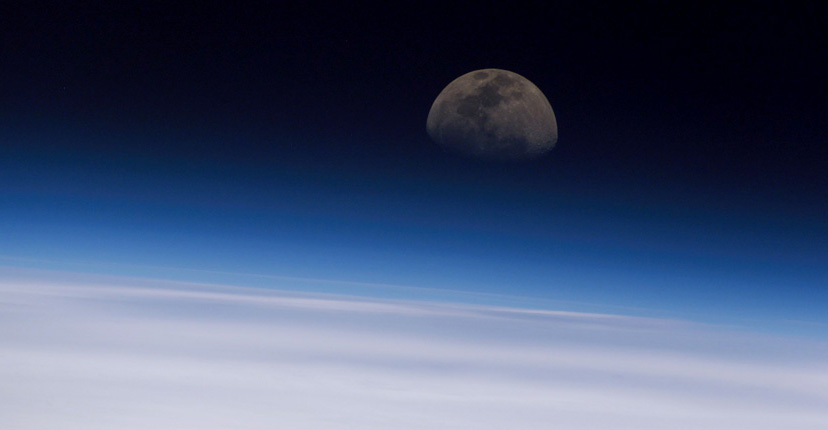 Protective Buffer
Protective Buffer
The Earth's atmosphere is more than just the air we breathe. It's also a
buffer that keeps us from being peppered by meteorites, a screen
against deadly radiation, and the reason radio waves can be bounced for
long distances around the planet.The air that accomplishes all of this is composed of five major layers.
The lowest is the troposphere, which is the layer that provides most of our weather. It contains about four-fifths of the Earth's air, but extends only to a height of about 11 miles (17 kilometers) at the Equator and somewhat less at the Poles.
The name comes from a Greek word that refers to mixing. And mixing is exactly what happens within the troposphere, as warm air rises to form clouds, rain falls, and winds stir the lands below. Typically, the higher you go in the troposphere, the colder it gets.
Above the troposphere is the stratosphere. It extends to a height of about 30 miles (50 kilometers) and includes the ozone layer, which blocks much of the sun's harmful ultraviolet rays.
 The stratosphere is warmer than the troposphere because of the energy
from the ultraviolet light absorbed by the ozone. At its base, the
stratosphere is extremely cold, about -110 degrees Fahrenheit (-80
degrees Celsius). At its top, the temperature has risen back nearly to
freezing.
The stratosphere is warmer than the troposphere because of the energy
from the ultraviolet light absorbed by the ozone. At its base, the
stratosphere is extremely cold, about -110 degrees Fahrenheit (-80
degrees Celsius). At its top, the temperature has risen back nearly to
freezing.Next comes the mesosphere. In this layer, the air temperature drops again, down to nearly -180 degrees Fahrenheit (-120 degrees Celsius) at the top. Meteors generally burn up in the mesosphere, which extends to a height of about 52 miles (85 kilometers). This is why the Earth's surface isn't pocked with meteor craters, like the moon's.
Entering Outer Space
Above the mesosphere is the ionosphere. It extends to about 430 miles (690 kilometers) and is so thin it's generally considered part of outer space. The International Space Station and many satellites orbit within the ionosphere.
 The ionosphere is named for the ions created within this layer by
energetic particles from sunlight and outer space. These ions create an
electrical layer that reflects radio waves, allowing radio messages to
be sent across oceans in the days before communication satellites.
Electrical displays in the ionosphere also create the auroras called the
Northern and Southern Lights.
The ionosphere is named for the ions created within this layer by
energetic particles from sunlight and outer space. These ions create an
electrical layer that reflects radio waves, allowing radio messages to
be sent across oceans in the days before communication satellites.
Electrical displays in the ionosphere also create the auroras called the
Northern and Southern Lights.
Beyond the ionosphere lies the exosphere. This tenuous portion of the Earth's atmosphere extends outward until it interacts with the solar wind. Solar storms compress the exosphere. When the sun is tranquil, this layer extends further outward. Its top ranges from 620 miles (1,000 kilometers) to 6,214 miles (10,000 kilometers) above the surface, where it merges with interplanetary space.
THIS IS REALLY INFORMATIVE!! Thanks for sharing your knowledge Panos.
ReplyDelete